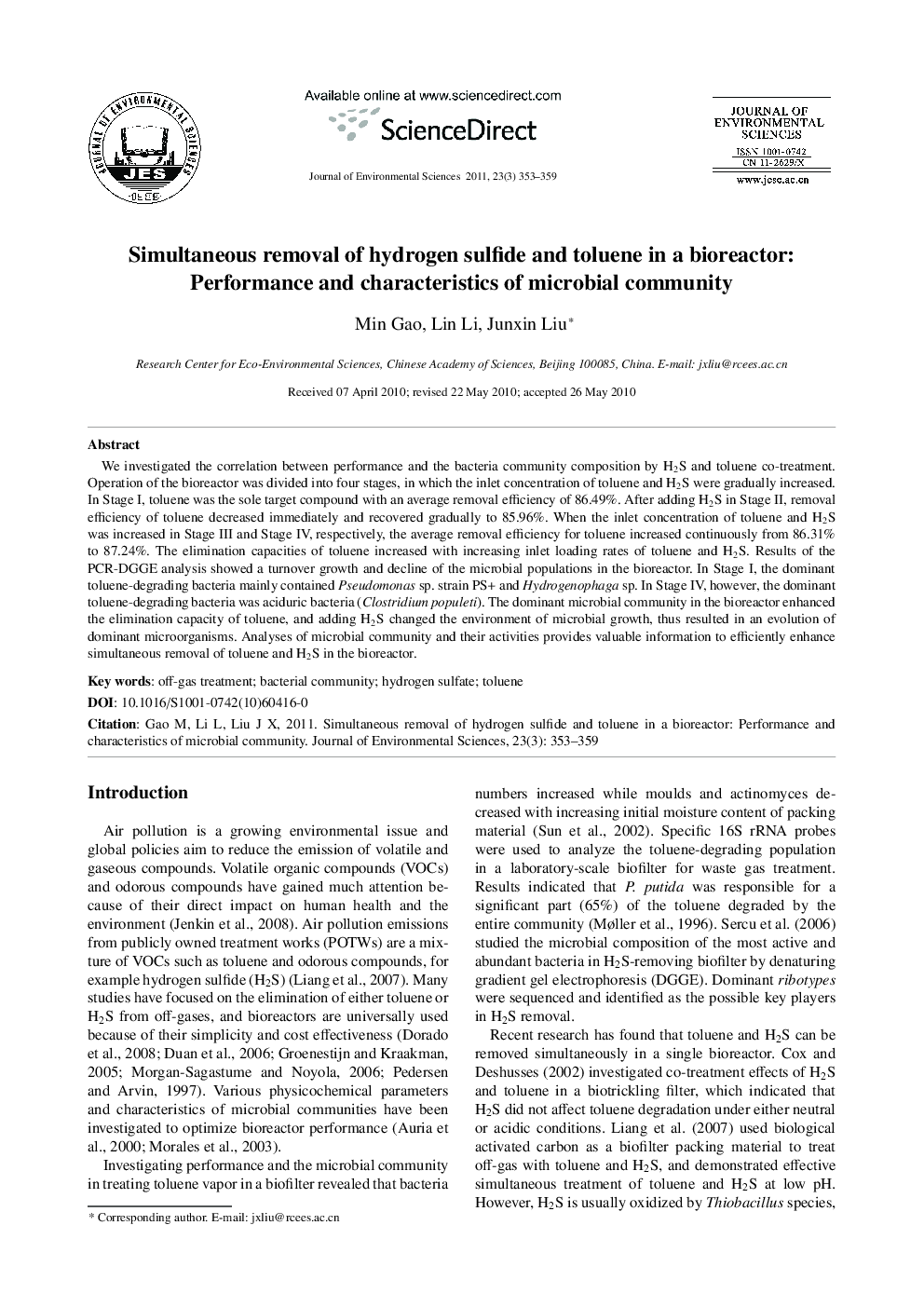| کد مقاله | کد نشریه | سال انتشار | مقاله انگلیسی | نسخه تمام متن |
|---|---|---|---|---|
| 4455509 | 1312521 | 2011 | 7 صفحه PDF | دانلود رایگان |

We investigated the correlation between performance and the bacteria community composition by H2S and toluene co-treatment. Operation of the bioreactor was divided into four stages, in which the inlet concentration of toluene and H2S were gradually increased. In Stage I, toluene was the sole target compound with an average removal efficiency of 86.49%. After adding H2S in Stage II, removal efficiency of toluene decreased immediately and recovered gradually to 85.96%. When the inlet concentration of toluene and H2S was increased in Stage III and Stage IV, respectively, the average removal efficiency for toluene increased continuously from 86.31% to 87.24%. The elimination capacities of toluene increased with increasing inlet loading rates of toluene and H2S. Results of the PCR-DGGE analysis showed a turnover growth and decline of the microbial populations in the bioreactor. In Stage I, the dominant toluene-degrading bacteria mainly contained Pseudomonas sp. strain PS+ and Hydrogenophaga sp. In Stage IV, however, the dominant toluene-degrading bacteria was aciduric bacteria (Clostridiumpopulen). The dominant microbial community in the bioreactor enhanced the elimination capacity of toluene, and adding H2S changed the environment of microbial growth, thus resulted in an evolution of dominant microorganisms. Analyses of microbial community and their activities provides valuable information to efficiently enhance simultaneous removal of toluene and H2S in the bioreactor.
Journal: Journal of Environmental Sciences - Volume 23, Issue 3, March 2011, Pages 353-359